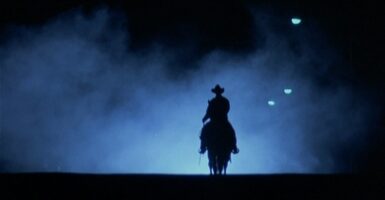Dung Beetles Steer By The Light Of The Milky Way
This article is more than 2 years old
Sure, they’re most known for their close association with poop, but it looks like dung beetles may be smarter than we give them credit for. Scientists from South Africa and Sweden have discovered that the feces-munching insects use the star-filled swath of the Milky Way to steer in a straight line. This behavior makes it the only known animal to get directions in this manner.

Australian biologist Eric Warrant, an expert on dung beetles, tells io9, “It is indeed the Milky Way streak of light that is seen—and this streak is very noticeable in the Southern hemisphere.” He goes on to note that the beetles likely can’t discern individual stars—except for the very brightest—but pick up on the collective illumination.
“The Milky Way,” Warrant continues, “is a bright band of light made up of countless millions of stars, and this they can see and orient with respect to.” It basically gives them a steady landmark around which they can steer.
Marcus Byrne, a colleague of Warrant, earlier discovered that dung beetles use light sources, even the Moon, to orient themselves.
In cloudy, overcast conditions, the new study found that the beetles lost the ability to roll their valuable turd balls in a straight line. Under a starry sky, even one showing only the Milky Way, however, the insects were able to stay true to their course.
Here’s why that’s important. The crap ball is an important resource, one full of valuable nutrients. Warrant says, “[M]ale beetles invest much energy and time in creating and rolling a ball that will be used by a female to lay her egg within.” So it’s kind of like a mobile home that plays a part in raising your young. Also, if another beetle spies your sweet, perfectly formed ball of poo, they’re prone to trying to steal them, so it behooves you to move your shit from point A to point B as directly as possible.












